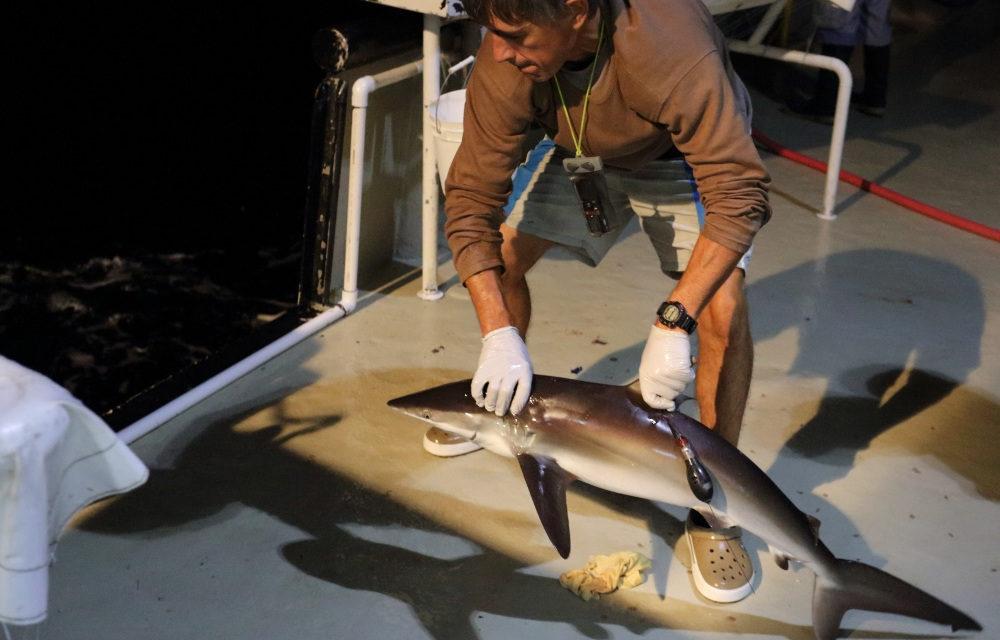To improve the assessment and understanding of tuna stocks in the western Pacific region, scientists have completed a research expedition during which they tagged 2135 fish, of which 75 percent were bigeye tuna.
The cruise, part of the broader Pacific Tuna Tagging Programme, was organised by the Pacific Community (SPC) in order to tag bigeye tuna in more westerly parts of the tropical Pacific than previously attempted.
The 36-day expedition on board the Gutsy Lady 4 included parts of the Exclusive Economic Zones (EEZs) of the Republic of Marshall Islands, Federated States of Micronesia, Nauru, Solomon Islands, Tuvalu and the high seas pocket bordering these countries.
The scientific cruise was funded by the Government of the Republic of Korea, the European Union, the Western and Central Pacific Fishery Commission and the International Seafood Sustainability Foundation (ISSF).
The tagging cruise used highly specialised trolling gear, originally developed in Hawaii, and targeted tuna gathering around drifting fish aggregation devices (dFADs) as well as anchored oceanographic buoys.
Tri Marine, a major fishing company operating in the region, assisted the project by providing live information to the scientific team about dFAD positions with suitable tuna aggregations, which proved to be critical to the success of the cruise.
In a significant first for such research cruises, another major fishing company in the region, SoPacTuna, was on standby to provide dFAD positions live to the scientific team.
“SPC has been conducting these research cruises since 2008 and the results gathered have contributed immensely to the overall spatial coverage of the Pacific Tuna Tagging Programme,” the Deputy Director of SPC’s Fisheries, Aquaculture and Marine Ecosystems Division, Dr John Hampton, said.
“This initiative has enabled us to tag close to 38,000 bigeye tuna in eight years, which would have been impossible using the traditional live-bait pole-and-line approach.
“The recapture data from the bigeye tuna tagged further to the east in previous cruises indicated large-scale movement of this species from the central Pacific to the eastern Pacific Ocean.
“The results from the current cruise will enable us to see if this pattern persists for bigeye tuna in the western part of the region.
“This will have important implications for how we structure future bigeye tuna stock assessments and on our scientific advice for countries in the region,” Dr Hampton explained.
During the cruise, four FADs were also equipped with satellite acoustic listening stations to record and send data transmitted by fish that had been implanted with sonic transmitters (73 tuna and 55 associated species including sharks, triggerfish and rainbow runners).
Such data helps scientists to better distinguish different species based on echo sounder buoy data and aids in studying the behavior of tuna and non-tuna species at dFADs so as to better understand the effects of dFADs on these species.
ISSF scientists that participated in the cruise are especially interested in understanding, for example, residency time, vertical behavior, and daily presence and absence patterns of the species.
Fine time-scale information, such as each species’ relative depth at different times during the day, may help determine if the timing of a purse seine set to avoid capturing certain species is a viable management option.
A huge effort was also made to deploy archival tags (123 for the trip) with 76% of them inserted in bigeye tuna.
These tags, which are implanted into the body cavity of the fish using a rapid surgical procedure, have sensors to collect and store highly detailed data on fish movement within the water column and between point of release and point of recapture.
Dr Hampton said the data from these tags should fill a significant gap in current knowledge of bigeye tuna in the western Pacific.
Twenty-five silky sharks were also equipped with satellite tags which allows for the study of their migration patterns.
“The data collected provides valuable information for the estimation of fish abundance, movements and fishing impacts and we encourage anyone who may come across a tag to please contact us via email: [email protected] or visit www.spc.int/tagging to assist us with this ongoing research,” Dr Hampton said.
More background information about the 12th Central Pacific tuna tagging cruise can be found in the 150th edition of SPC’s Fisheries Newsletter.
Media contacts:
Bruno Leroy SPC Fisheries Scientist, [email protected]
Neville Smith SPC Principal Fisheries Scientist, [email protected]
Caption:
SPC Fisheries Scientist Bruno Leroy releases a tagged silky shark
Useful link:
SPC Oceanic Fisheries Programme
